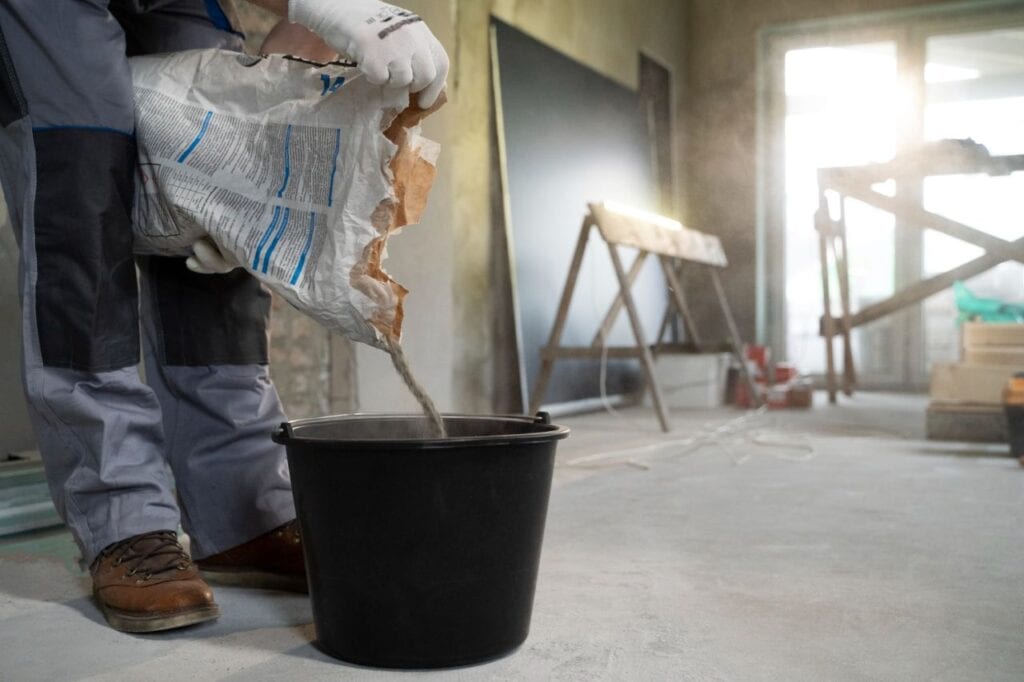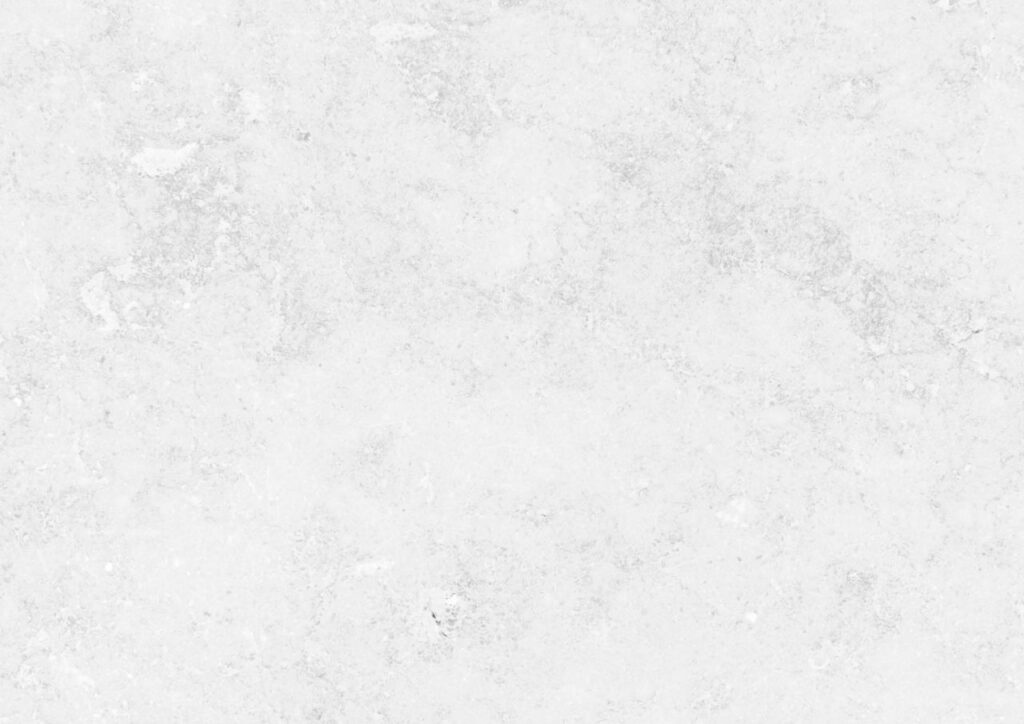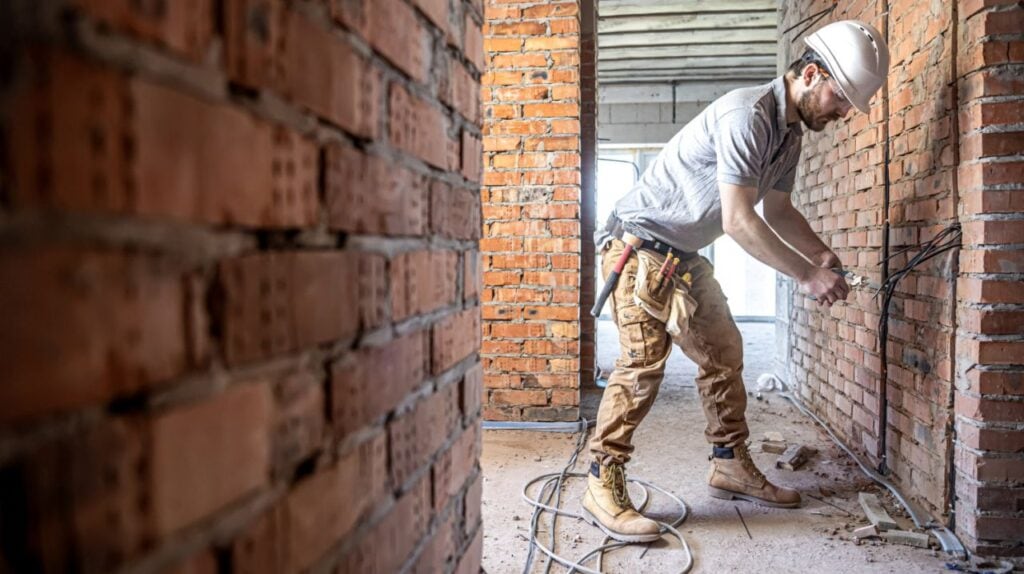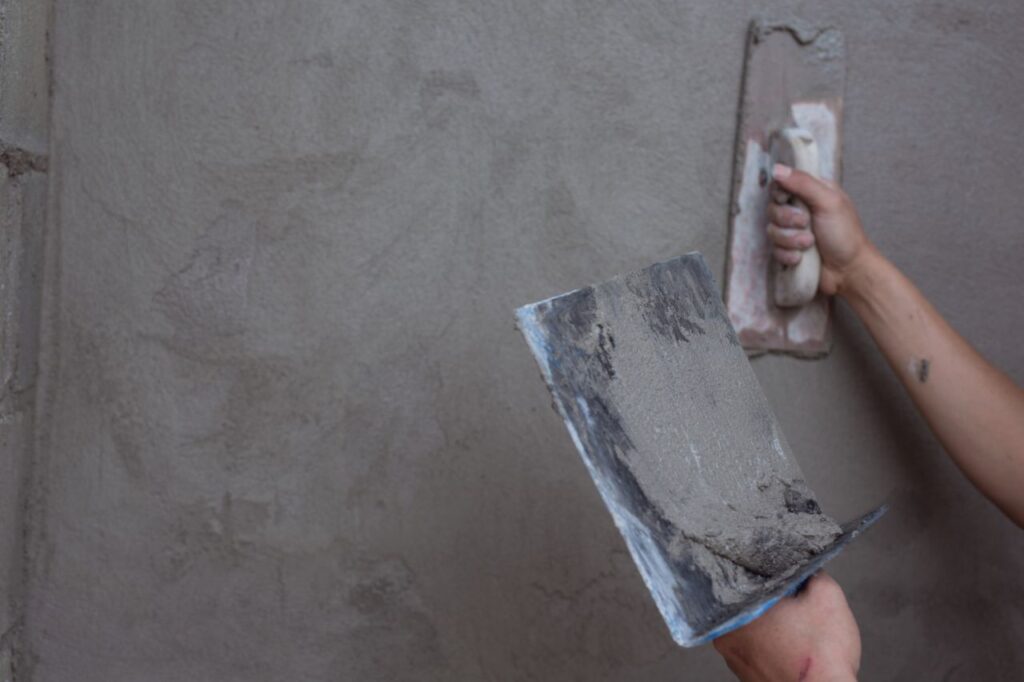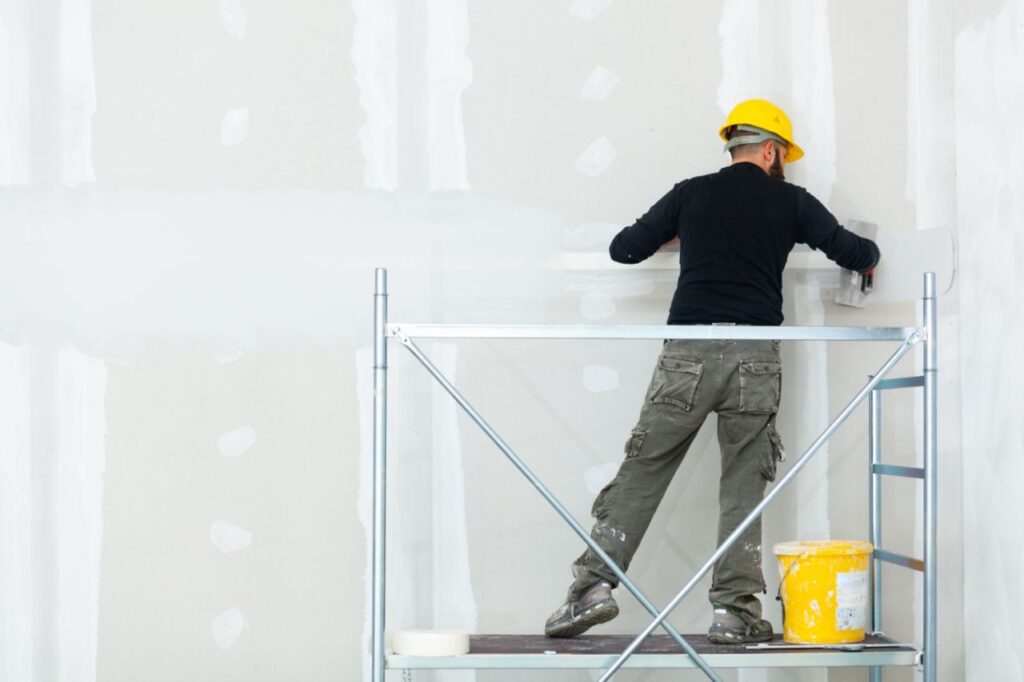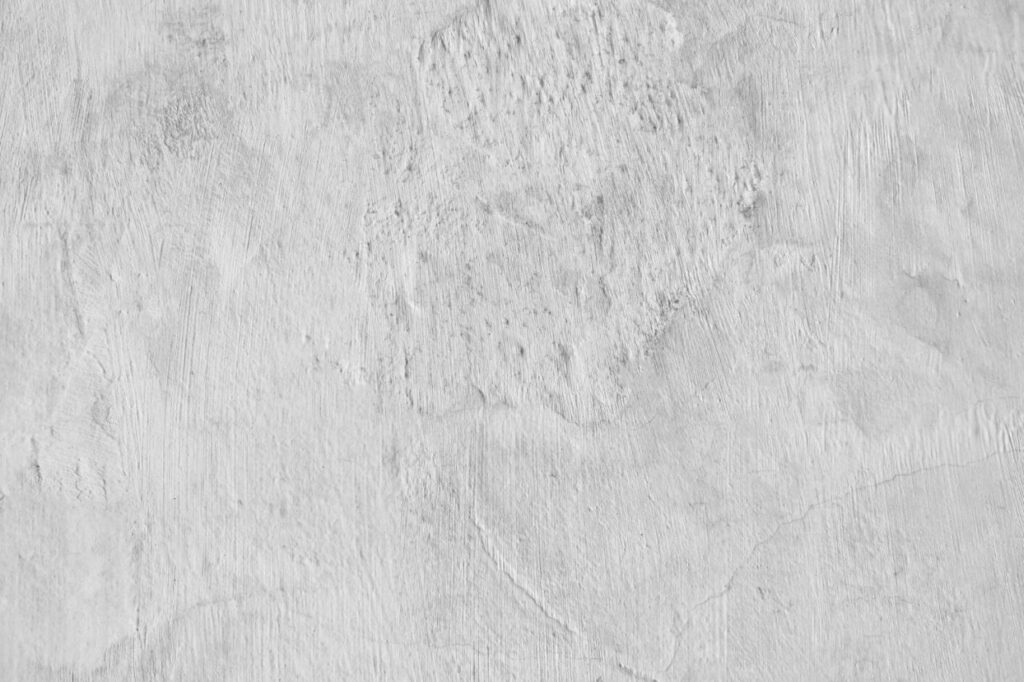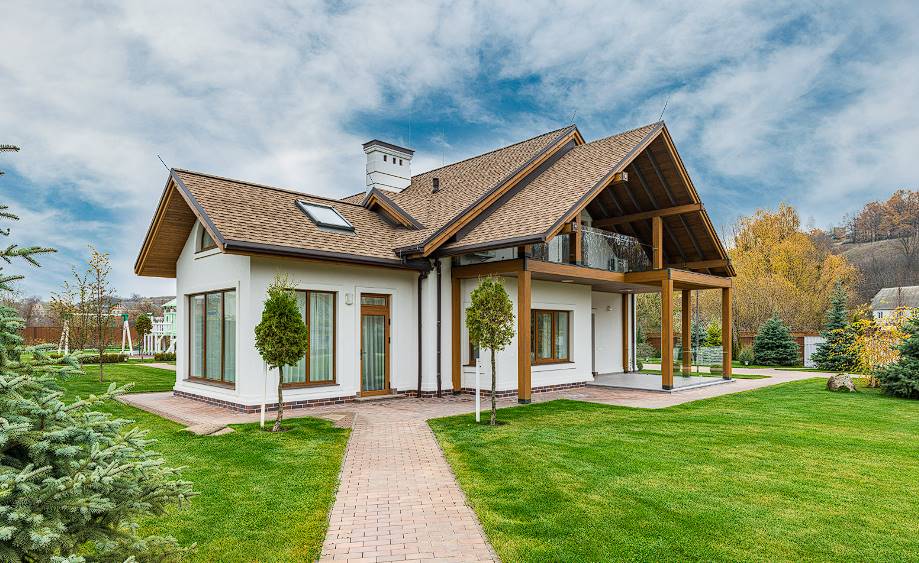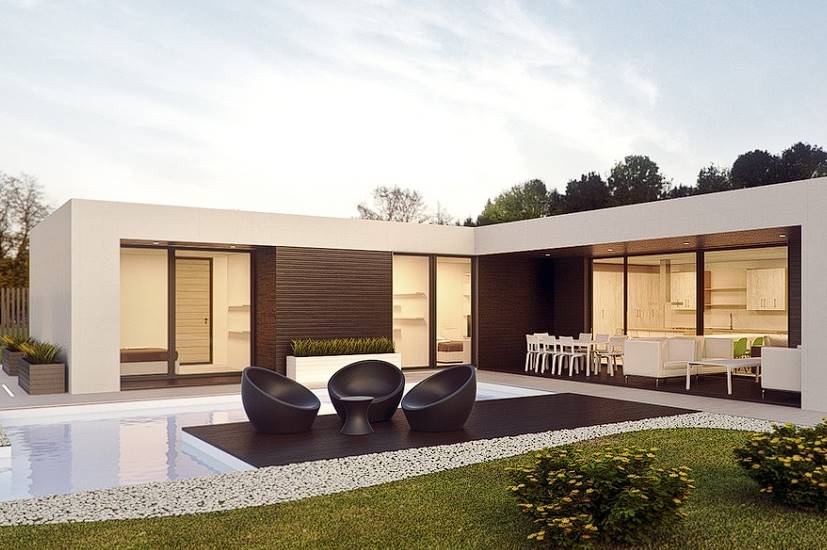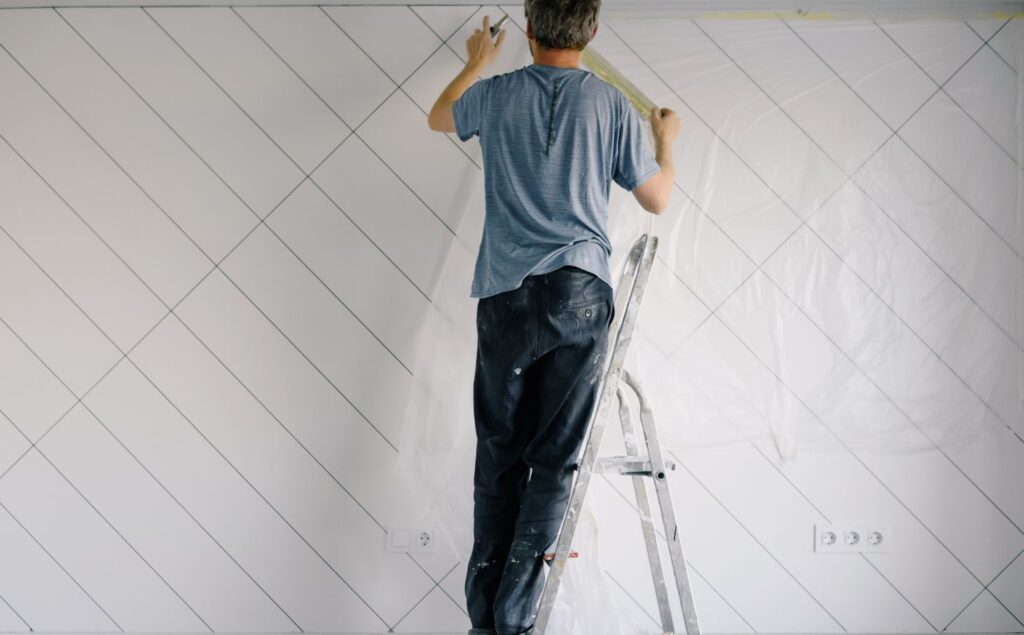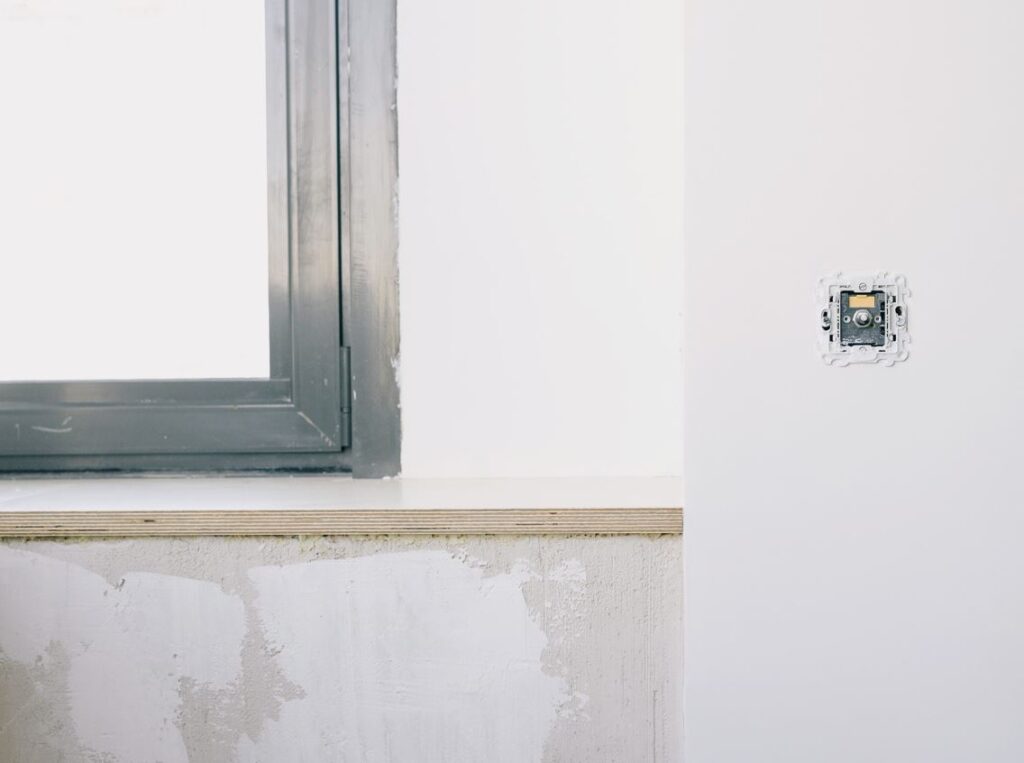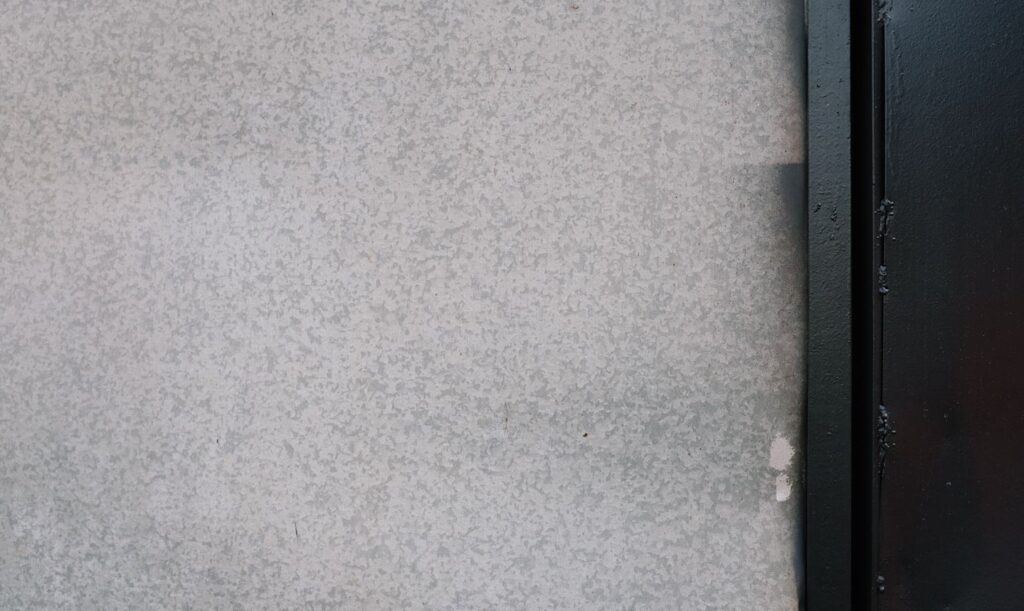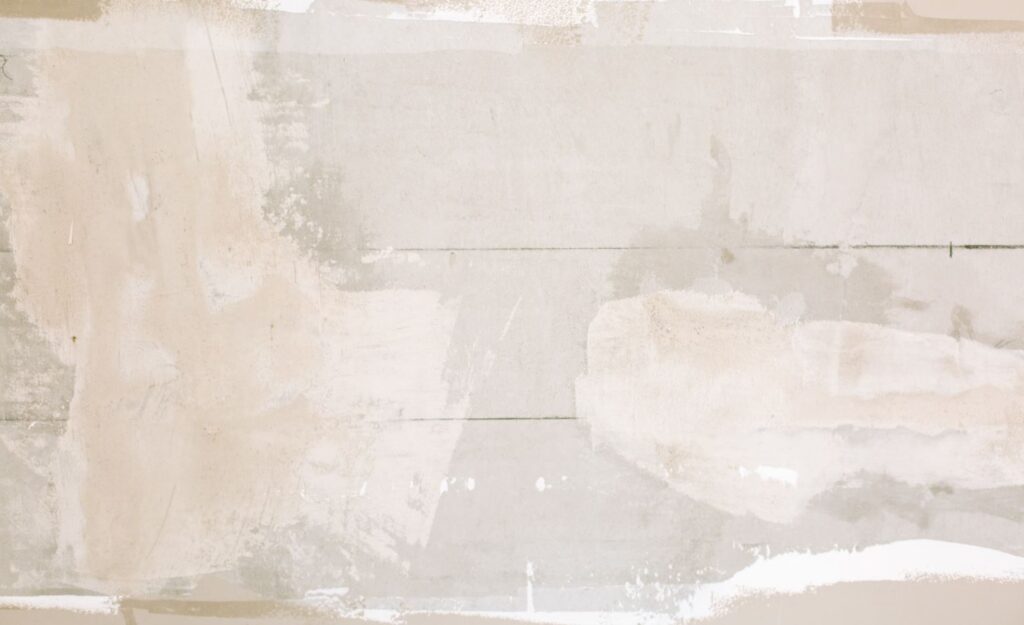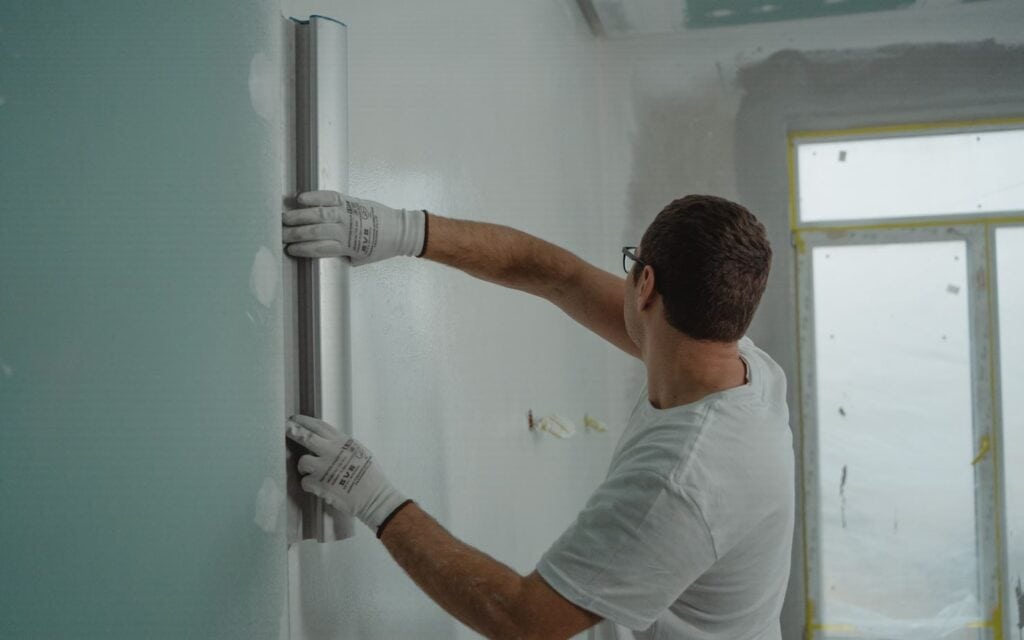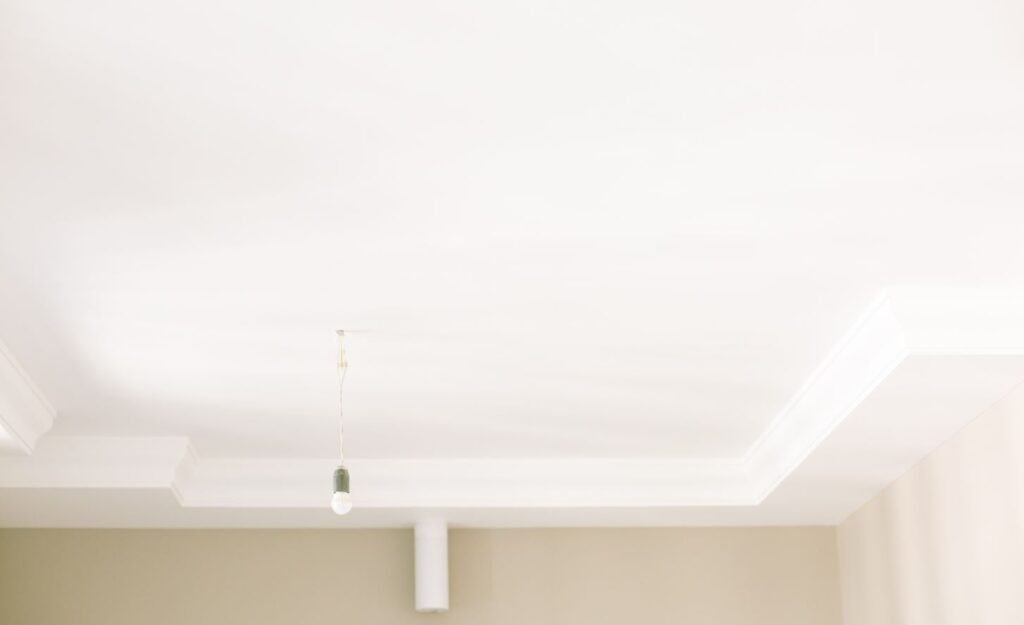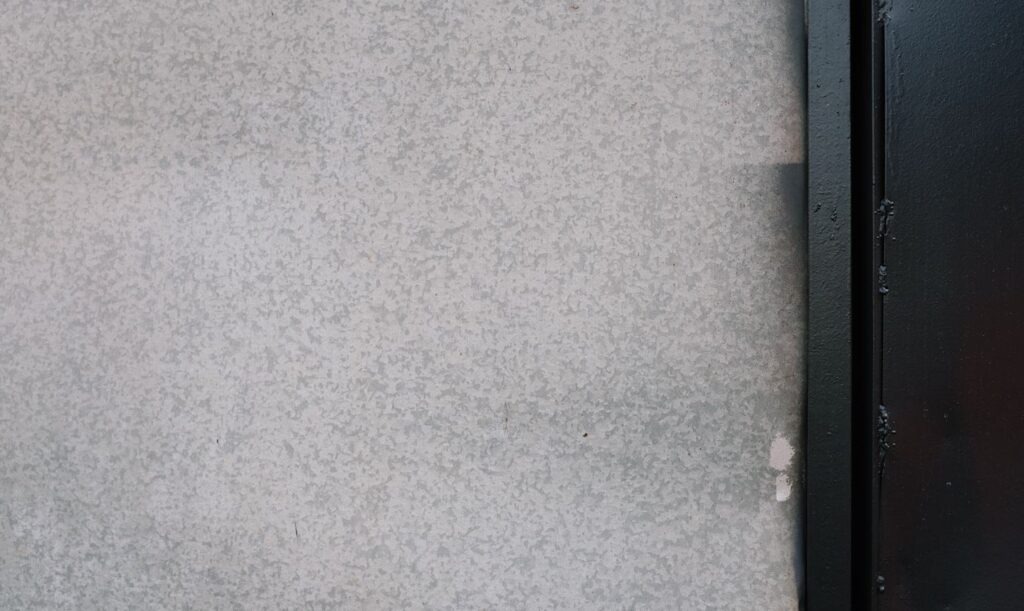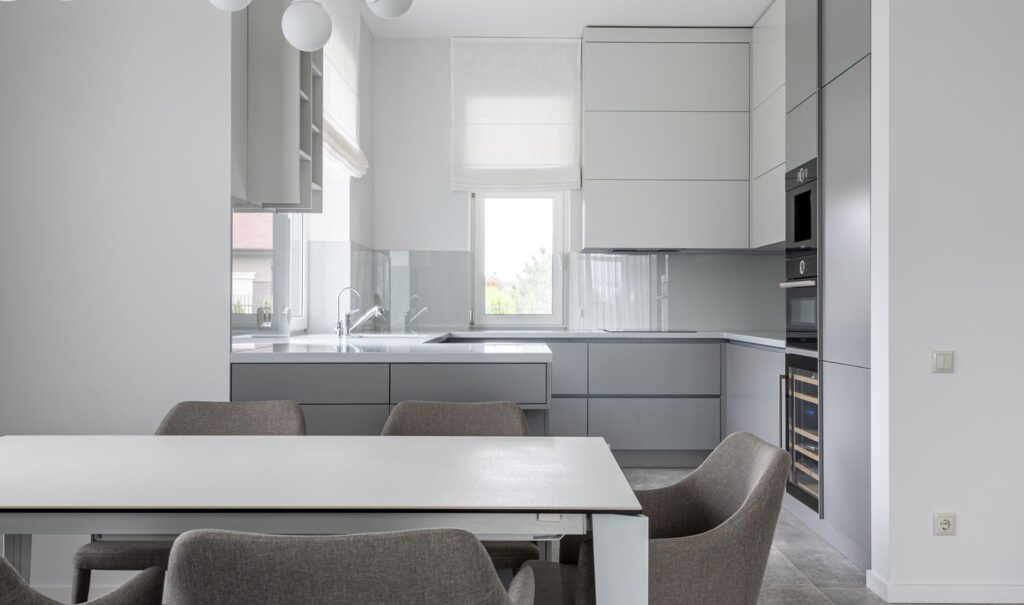Applying a skim layer is essential if you want your walls or ceilings to seem smooth and professional. A skim coat of plaster or joint compound is applied to smooth out irregularities, produce a consistent texture, and prime the surface for painting or wallpapering.
This post will outline skim coating's benefits and how it may dramatically improve your home's aesthetics.
What is Skim Coating?
Skim coating is an excellent solution for restoring the look of outdated walls and ceilings. Level five drywall finishes, or skim coats, are applied using a thin layer of joint compound thinned with water and spread with a brush, roller, or spray machine. Then a drywall knife or trowel is used to make the surface even.
It's a simple method for levelling uneven walls and ceilings in preparation for new paint or texture. The clean, smooth surface doesn't cast shadows like knockdown or orange peel drywall finish textures, revealing your paint's real colour.
Although many methods and materials go into skim coating walls, the overall cost is often far lower than that of a full remodel. Two skim coats are the minimum required for a uniform and smooth finish.
The most compelling arguments that favour giving your walls and ceilings a skim coat are detailed below.
For What Reason Should You Use a Skim Coat?
The multiple benefits of a skim coat make it an integral part of any renovation. Let's examine the main arguments that favour using a skim coat on your walls or ceilings.
Ruining Your Walls With Wallpaper
A skim coat must be applied if the drywall is gouged when removing the wallpaper or if the drywall's outer paper is torn off and the brown paper is exposed. A prime surface sealer must prime the brown paper once it has been exposed to skim-coat.
Drywall Repairs
A skim coat is a great way to get a smooth, even surface for retexturing, priming, and painting after the drywall or ceiling repairs.
Old Surfaces
Damage is done over time by residents and their pets. Skim coating can restore the shine of your dull, outdated walls.
Enhanced Aesthetics
The improved visual appeal of your home is one of the main reasons to apply a skim coat. A skim coat makes the surface look brand new by covering up any flaws or imperfections.
Applying a skim layer before painting or wallpapering is important to ensure a smooth surface against which the final product will look its best.
Skim coating is an excellent alternative to tearing down walls and starting over if you or your client have an unsightly, old-fashioned, poorly executed wall or ceiling texture.
New Installs
A light skim coat should be applied to the new drywall that will not be textured. This will provide a smooth surface for priming and painting.
It is most noticeable with paints with a shine, such as semi-gloss or gloss paints, where the paint penetrates unevenly into the joint compound and drywall paper, revealing the tape joints. The term "flashing" or "photographing" is used in painting to describe this technique.
When there is a lot of natural light in a space, or if a South-facing window allows sunlight to shine directly down a wall or ceiling, this can also cause flashing.
Effective and Low-Cost Method
Compared to more substantial repairs or restorations, applying a skim coat is more cost-effective. A skim coat is a less expensive alternative to ripping down and rebuilding entire walls or ceilings when you want to give your home a facelift. Using a skim coat to cover up defects saves time and money while producing professional-looking results.
Equipment Necessary for Skim Coating
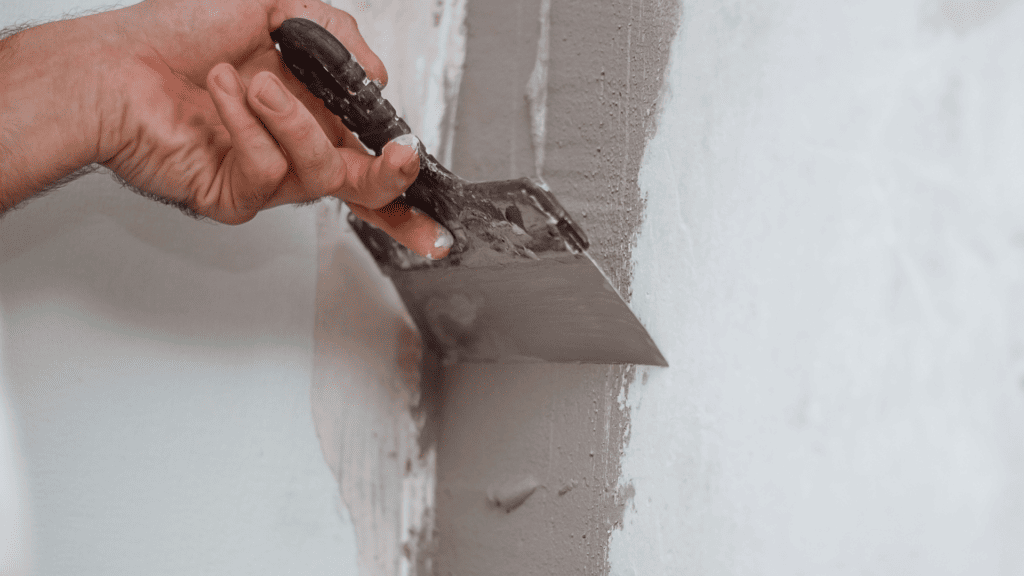
Skim-coating walls can be done in a variety of ways, but here are some of the more popular items you should have on hand:
Drop cloth
Protect the floor from mud pans dripping between the wall and your workspace with a drop cloth or paper. Painter's tape can create a frame around the drop cloth, keeping it in place and protecting the surrounding moulding and trim. Using a drop cloth can also reduce the time spent cleaning up afterwards.
Drywall compound
You can choose between ready-mix and dry-mix drywall compounds depending on the area you must cover or your budgetary constraints.
Paint roller
If you want a smooth finish on your walls without breaking the bank, a paint roller may be the way to go instead of renting a texture sprayer. In addition, if you have painting experience, using a paint roller will feel more natural.
Cup or five-gallon bucket for painting
Drywall mud is applied once it has been mixed. To ensure you have enough mixture to finish a whole wall or portion, mix it up in a nearby bucket or pan that can be moved easily.
Putty knife
If there are still gaps or valleys in the texture after the first application, you can fill them in with a squeegee-like instrument and remove the excess mud. If you messed up the taping around the edges and corners, you can fix it with a putty knife or drywall knife.
Skim Coating Procedures
After gathering the necessary supplies, you may test your technique on a scrap of drywall or gypsum board before attempting a full wall. If you want your first skim coat to look great, follow these simple steps.
- Set up your workspace. Using butcher paper or drop cloths to protect the floor is a time saver. Protect the surrounding trim and outlets from overspray by covering them with plastic and taping them off.
- Harmonise the goop for drywall. You can purchase a mixing attachment for a power drill to speed up thinning your joint compound to a yogurt-like consistency. This technique may result in splashing, so ensure you work in a well-prepared area.
- Spread on some mud for the first layer. Working on small portions of the wall at a time will help you achieve a uniform coat and drying time when using a heavy nap paint roller for the initial coat.
- Angle the light to illuminate the workspace. Having a light source at an angle to the target surface is a popular tactic contractors use to guarantee that the skim coat is applied uniformly and covers all undesired textures. Shadows will provide pronounced relief on any peaks or bumps.
- Put on the base coat with a trowel. A trowel or taping knife with sharp edges can be used to smooth down the first layer and fill in any gaps the roller missed. If you used a roller to spread the mud, you should squeegee it off in the same direction.
- Between coats of paint, sand the wall. If your strokes overlap, there is a chance of creating visible lines at the troweling stage. After the initial layer of drywall paint has dried, you can easily remedy this by sanding the area between coats. Before applying the second coat of paint, sand any portions of the wall that are difficult to access with a pole sander.
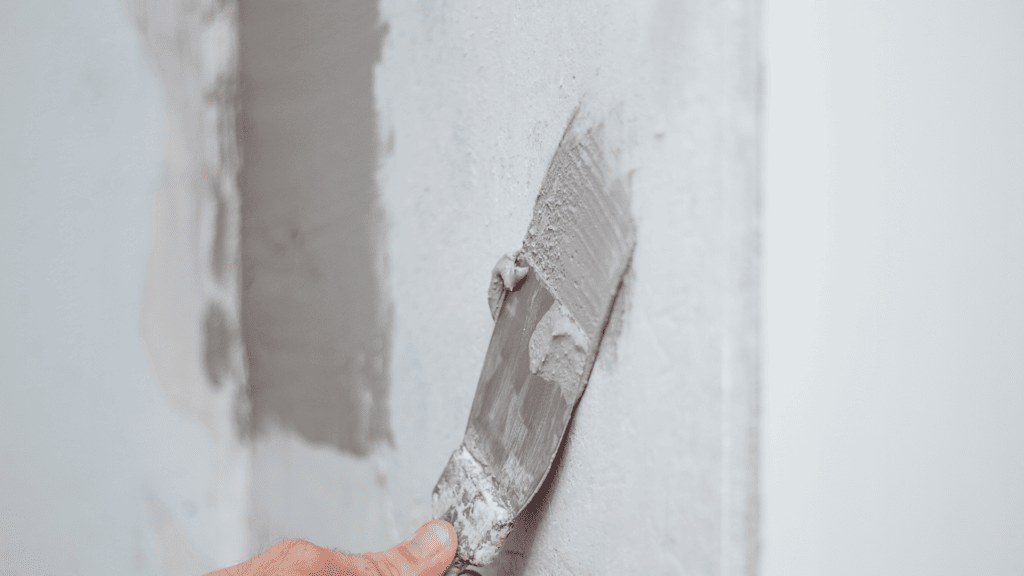
The Pros and Cons of Using Skim Coat
Knowing the ins and outs of skim coating will help you decide if it's a good fit for your home improvement project.
Not to worry, as we have laid out the benefits and drawbacks of skim coatings for your perusal:
Advantages of Skim Coat
Cost-Effective
Money is a crucial factor when it comes to fixing and maintaining machinery. Skim coating can be applied over existing wall or ceiling texturing for a fraction of the removal cost.
If you're sick of your present texture but can't afford a complete transplant, the skim coating may be your best bet.
Smooth Surface
Smoothing out walls and ceilings using skim coating is a great option. It also requires less texture to make your home's interior look new and luxurious.
Therefore, skim coating is the best option for any wall restoration project, including painting and retexturing.
Appealing Look
When a wall is freshly painted, the gap between the floor and the ceiling is evident, which isn't aesthetically pleasing.
Thanks to the skim coating, the ceiling now looks sleek and uniform with the walls.
In addition, the combination is so soft and pleasant that it is hard to tell the floor from the walls.
The skim coating creates the illusion of a higher ceiling and a more open space.
Superb Alternative For Fixing
Skim coating can be used for more than just filling the space between the wall and the floor. It can also hide seams, mouldings, and even mortar between bricks. The skim coating also serves to patch cracks and smooth out imperfections.
It would be quite pricey to mimic their appearance and feel without a skim layer. Furthermore, the process could be difficult and lengthy. In contrast, fixing walls using a skim coat is easy and fast.
Excellent For Getting Walls Ready To Paint Again
A skim coat completely covers the surface and seals it so no paint can seep through.
The colours will likely blend if you paint over an existing wall covering. A skim coat, however, functions as a barrier between your finished wall and your next coat of paint, giving you a fresh surface to work with.
It also guarantees that your colour is uniform and that there are no brush strokes or variations in gloss.
Good For Use In Building Your Wall The Eye-Catching Centrepiece
More and more people are making their walls the showpiece of their living spaces to look hip.
Once you see the dings and scratches—which primers and paints can't cover—it's hard to take your eyes off them.
So, whether you want to install track lighting along with the ceiling or hang lights directly on the wall, the skim coating will prevent the roughness of the walls from being accentuated by shadows.
Disadvantages of Skim Coat
Extensive Preparation Time
Despite the ease and speed with which skim coating can be applied, it cannot be used in its current form. The first step is the preparation process, which requires much time and knowledge.
However, before you can apply primer to the patched area, the joint compound must be applied and allowed to dry.
The primer needs to be dry before the skim coat is applied. Skim coating takes more time because of all these procedures.
Increases The Visibility Of Flaws On The Surface
If the skim coating is not applied properly, wall damage and other imperfections will stand out more.
The skim coating requires more care to accomplish the same results as texturing, which can hide dings and scratches.
Damage to a skim-coated wall is also more noticeable than via a textured wall.
Involves Effort And Skill
Skim coating is a sophisticated and time-consuming process that is typically best left to experts. However, if you insist on covering it yourself, ensure you know what you're doing.
If you miss any bumps or lumps, you'll have to resand the entire surface from scratch. The wall will need a second coat of paint at that point.
The Price Of Labour Is A Factor
Since skim coating requires specialised skill and care, you should get it done by a pro. Otherwise, you'll incur additional costs and lose valuable time.
Therefore, you should prioritise the labour cost to avoid taking that path.
Drying Time Is Very Protracted
The drying time for a skim coat is between 12 and 24 hours. This could be a problem if you're in a rush or need the process to be quick.
The skim coating may be a better solution if you're short on time because of the time commitment.
Conclusion
Skim coating is a crucial step in restoring the appearance of outdated walls and ceilings. It involves applying a thin layer of joint compound thinned with water and spread with a brush, roller, or spray machine. The surface is then made even using a drywall knife or trowel. Skim coating is an excellent solution for levelling uneven walls and ceilings in preparation for new paint or texture. It provides a clean, smooth surface that doesn't cast shadows like knockdown or orange peel drywall finish textures, revealing the paint's real color.
The main reasons for using a skim coat include restoring the look of outdated walls, improving the visual appeal of the home, and providing a more cost-effective alternative to tearing down and rebuilding entire walls or ceilings. Equipment needed for skim coating includes a drop cloth, drywall compound, paint roller, cup or five-gallon bucket for painting, and a putty knife.
To apply a skim coat, gather necessary supplies, such as drop cloths, painter's tape, ready-mix and dry-mix drywall compounds, paint rollers, buckets, and putty knives. Test the technique on a scrap of drywall or gypsum board before attempting a full wall. Set up your workspace, protect surrounding trim and outlets from overspray, and harmonize the goop for drywall with a mixing attachment for a power drill. Skim coating is an essential part of any renovation and can significantly improve your home's aesthetics. Skim coating is a cost-effective and versatile home improvement technique that can be applied over existing wall or ceiling texturing for a fraction of the removal cost.
It provides a smooth surface, hides seams, and smooths out imperfections, making it an excellent alternative for fixing walls. Skim coating also creates an appealing look by creating a smooth, open space between the floor and ceiling.
However, skim coating has its drawbacks, including extensive preparation time, increased visibility of flaws, and the need for skilled labor. It requires more care and effort to achieve the same results as texturing, which can hide dings and scratches. Skim coating requires more effort and skill, and it is typically best left to experts.
The price of labor is a factor, as skim coating requires specialized skill and care, so it is best to get it done by a professional to avoid additional costs and loss of valuable time. The drying time for a skim coat is between 12 and 24 hours, which may be a problem for those in a rush or needing a quick solution.
In conclusion, skim coating is a cost-effective and versatile home improvement technique that can be used for various purposes, including wall restoration, painting, and retexturing. However, it is important to prioritize labor costs and consider the time commitment when choosing a method for home improvement projects.
Content Summary
- Skim coating is used to achieve smooth and professional-looking walls and ceilings.
- It involves applying a thin layer of joint compound or plaster to even out irregularities.
- Skim coating is an effective solution for restoring outdated walls and ceilings.
- It provides a clean, smooth surface that enhances the aesthetics of your home.
- Applying a skim coat is important before painting or wallpapering to ensure a smooth final result.
- Skim coating is a cost-effective alternative to full remodels or rebuilding walls.
- It can be used to repair drywall and create a smooth surface for retexturing, priming, and painting.
- Skim coating is beneficial for covering up flaws, imperfections, and old surfaces.
- A skim coat makes walls and ceilings look brand new and eliminates shadows caused by textured finishes.
- It can be applied to new drywall to provide a smooth surface for priming and painting.
- Skim coating is particularly important when using shiny paints that can reveal tape joints or flashing.
- The process of skim coating requires certain equipment, such as drop cloths, drywall compound, a paint roller, a mixing container, and a putty knife.
- Before starting the skim coating process, it's essential to set up your workspace and protect the surrounding areas.
- Harmonizing the joint compound to the right consistency is crucial for a successful skim coat.
- The first layer of mud is applied using a heavy nap paint roller or other tools for small portions of the wall.
- Angling the light source helps ensure a uniform application of the skim coat.
- A trowel or taping knife is used to smooth the first layer and fill in any gaps.
- Sanding the wall between coats helps achieve a seamless finish.
- Skim coating is cost-effective compared to removing existing textures or undertaking extensive repairs.
- It provides a smooth surface that is ideal for painting and retexturing.
- Skim coating improves the overall look of your home by creating a uniform and appealing appearance.
- It can hide seams, mouldings, and mortar between bricks, making it a versatile solution.
- Skim coating creates a barrier between existing wall coverings and the new coat of paint, ensuring a uniform color and surface.
- It is beneficial for creating eye-catching walls and preventing shadows from accentuating wall roughness.
- The preparation process for skim coating requires time and knowledge, including applying joint compound and allowing it to dry before priming.
- Improper application of skim coating can make wall damage and imperfections more visible.
- Skim coating requires effort and skill, making it a process best left to professionals or those with experience.
- Hiring a professional for skim coating can increase the overall cost of the project.
- Drying time for a skim coat can range from 12 to 24 hours, which may be a limitation if time is a factor.
- Skim coating is a time-consuming process that requires patience and attention to detail.
- It can be a more suitable option than texturing for achieving a smooth and flawless finish.
- Skim coating may require multiple coats and additional sanding for optimal results.
- A well-executed skim coat can greatly improve the appearance of walls and ceilings.
- Proper preparation and understanding the process are crucial for achieving satisfactory skim coating results.
- Skim coating can be a cost-effective way to refresh and update the look of your home without major renovations.
- The visibility of flaws and damage on skim-coated surfaces can be higher compared to textured surfaces.
- Skim coating is a specialized process that may require professional assistance for best results.
- Labor costs should be considered when deciding whether to hire a professional for skim coating.
- The drying time of a skim coat can be lengthy, which may be inconvenient if time is limited.
- Skim coating can be a faster alternative to other methods when time is a constraint.
Frequently Asked Questions About Skim Coat
Typically, you will need plaster or joint compound, a trowel, sandpaper, a bucket, and mixing tools. The exact materials may vary based on your specific skim coating technique or product.
The time required depends on various factors, such as the size of the area, the number of coats needed, and the drying time between coats. It can range from a few hours to a couple of days.
Sanding is often necessary to achieve a smooth and even surface after applying a skim coat. It helps to remove any imperfections and create a seamless finish.
Skim coating suits most common interior surfaces such as drywall, plaster, or painted walls. However, it is essential to assess the condition of the surface and ensure it is clean, dry, and free from loose debris before applying the skim coat.
A properly applied and maintained skim coat can last for many years. However, its longevity also depends on factors like the quality of the materials used, environmental conditions, and proper care and maintenance of the painted or wallpapered surface on top of it.



